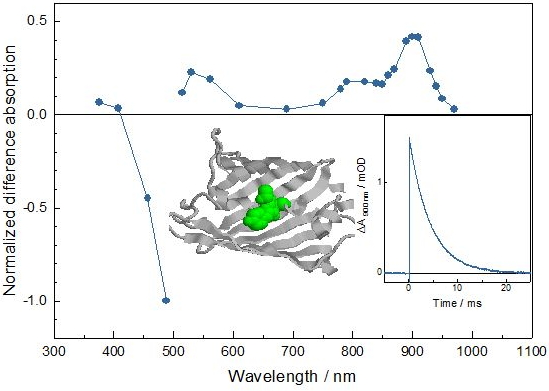Green fluorescent proteins (GFPs) are genetically encoded markers allowing the localization of down to individual proteins by optical microscopy. Their fluorophore is formed from three amino acids and is located at the center of a beta barrel that protects it from the environment. GFPs have high absorption coefficient and fluorescence yield, but only moderate photostability. They can reversibly form temporary nonfluorescent “dark” states before definitely losing fluorescence after about 100000 excitation/emission cycles.
At the IBS, the Pixel team has previously solved the structures of some of such dark states. All of them showed considerable chemical modifications which raised the question as to their irreversibility. Therefore, it was suspected that a reversible gateway state should exist the knowledge of which would allow to improve the GFP’s behavior. But little was known on this putative « phantom » state: its chemical character (triplet, radical, biradical ?), its yield (percents, permills ?), its lifetime (nano-, micro-, millisecondes ?), its reactivity (oxidative, reductive, both ?), its absorption spectrum (UV, VIS, IR ?).
Thanks to a collaboration with the team of Klaus BRETTEL at I
2BC (CEA Saclay), the Pixel team of the DYNAMOP group at the IBS exposed the paradigmatic fluorescent protein EGFP to a study by transient absorption spectroscopy. This technique has previously been applied to fluorescent proteins very little. Pushing it to its resolution limits allowed the detection of the spectral signature of the « phantom » dark state and its characterization by answering all of the above questions. These findings open the way for a better understanding of the photophysical functioning of fluorescent proteins and fuel the hope for finding keys to their further optimization.

EGFP chromophor structure, triplet
adsorption spectrum and decay kinetics.